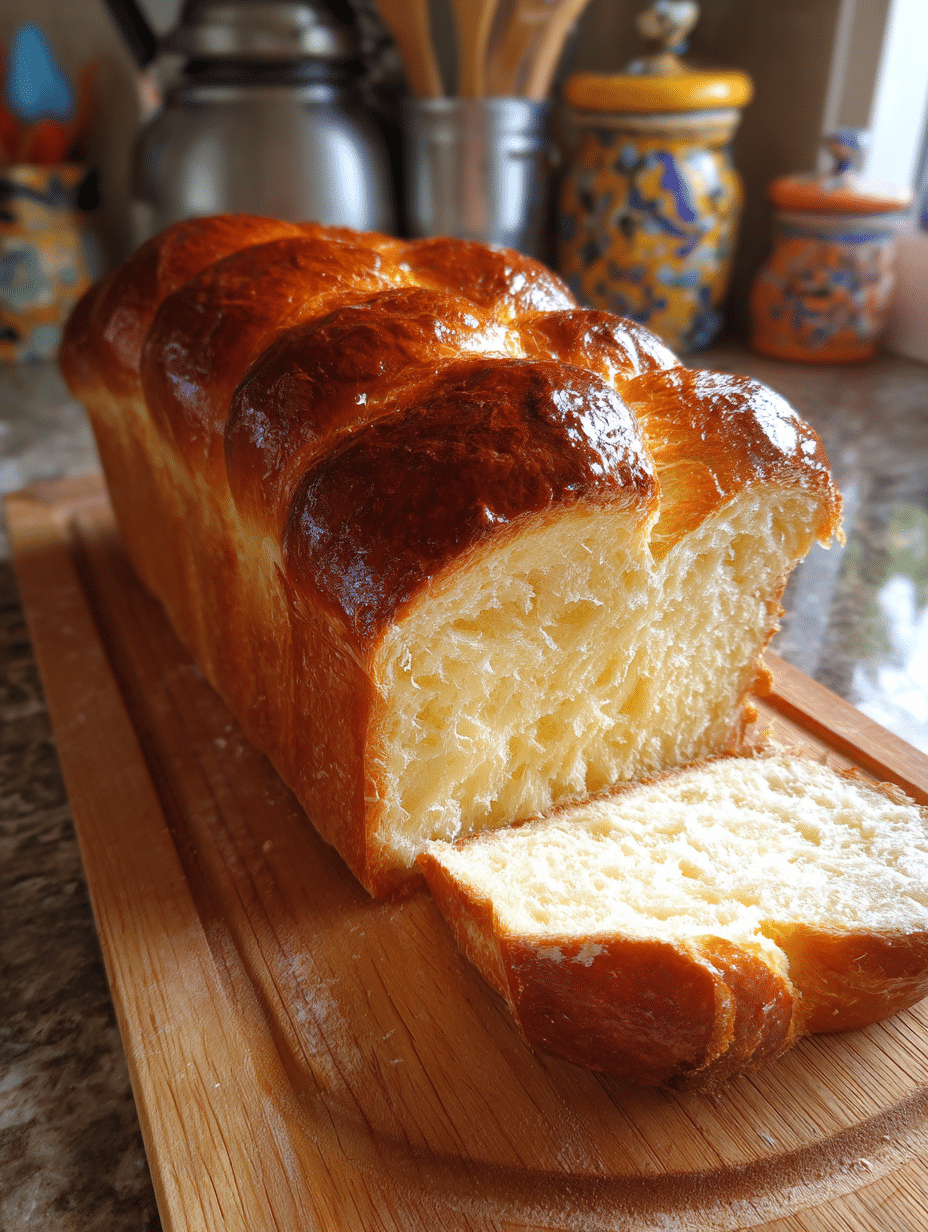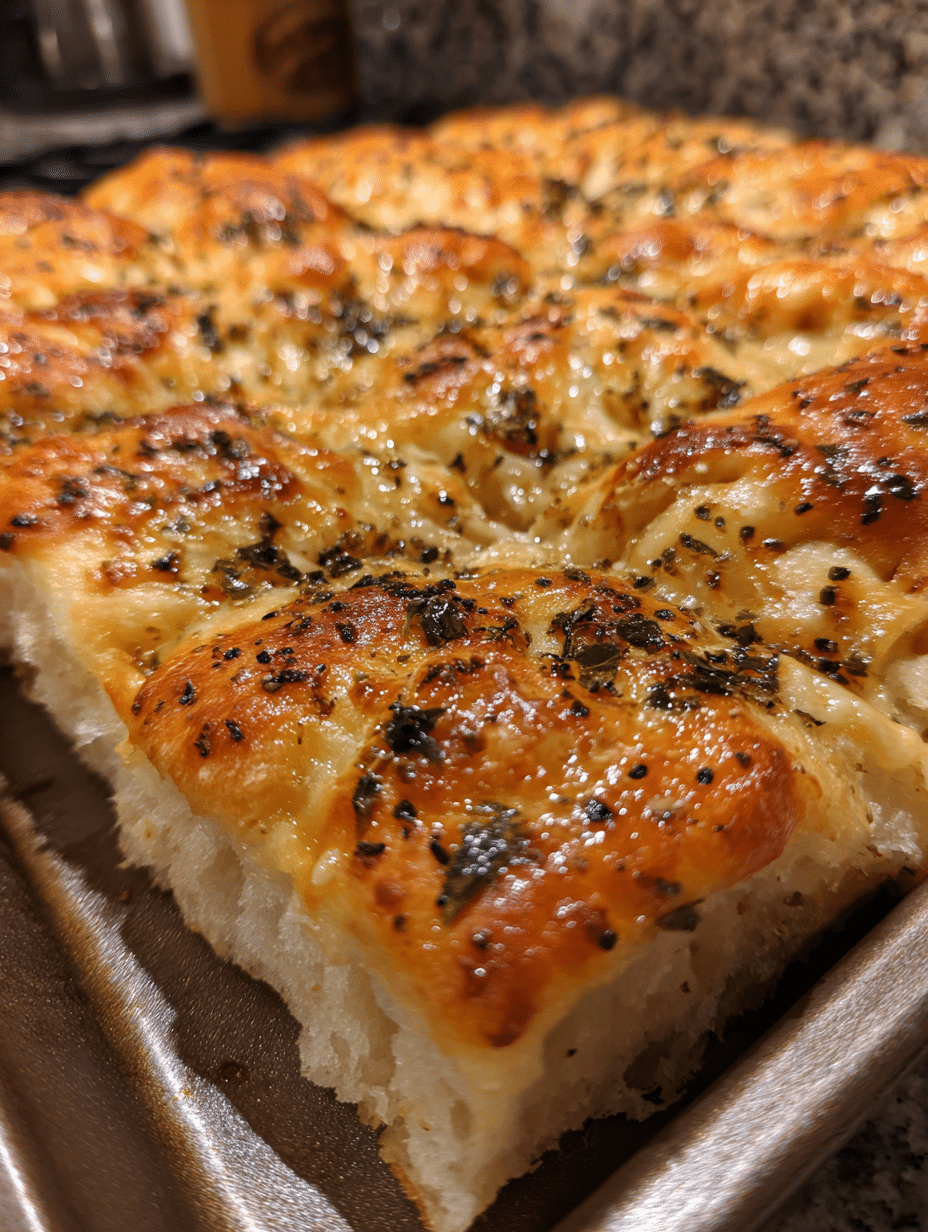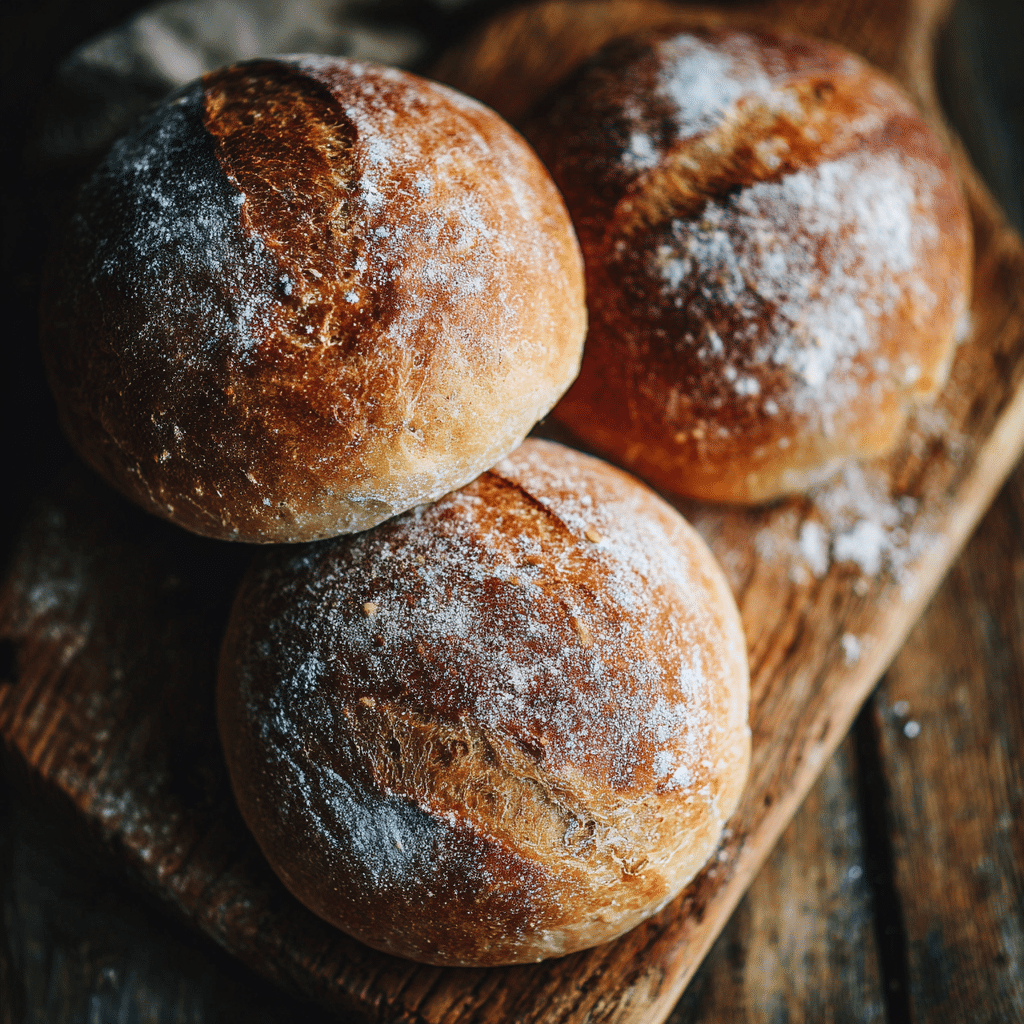Light, rich, and impossibly tender, sourdough brioche bread might just be the most luxurious thing to ever come from flour and starter. If you’ve ever wanted to combine the flavor complexity of sourdough with the buttery softness of brioche, this recipe is your golden ticket. In this article, I’ll guide you through the step-by-step method to master this enriched dough, from first mix to final golden crust. You’ll also get pro tips for success, answers to common questions, and a peek into how I’ve made this bread part of my weekend rhythm. Let’s make something beautiful and seriously delicious.
Table of Contents
Table of Contents

Sourdough Brioche Bread
- Total Time: 14 hours (includes overnight proof)
- Yield: 1 loaf 1x
- Diet: Vegetarian
Description
This rich, golden sourdough brioche bread blends the tangy complexity of natural fermentation with the buttery softness of a classic French loaf. Ideal for breakfast, brunch, or the ultimate French toast.
Ingredients
3 ½ cups all-purpose flour
½ cup active sourdough starter
4 large eggs
¼ cup milk
¼ cup sugar
1 tsp salt
¾ cup unsalted butter, softened (not melted)
Instructions
1. In a bowl, mix flour, starter, eggs, milk, sugar, and salt until a shaggy dough forms.
2. Knead in butter slowly, a few tablespoons at a time, until fully incorporated and dough is smooth.
3. Cover and let rise at room temp for 4–6 hours, then refrigerate overnight.
4. Next day, shape into a loaf or braid and place in a greased pan.
5. Proof at room temp for 2–4 hours until puffy.
6. Brush with egg wash and bake at 375°F (190°C) for 30–35 minutes until deep golden and shiny.
Notes
Use a very active starter for best rise.
Let butter soften at room temp but do not melt.
Overnight refrigeration deepens flavor and improves texture.
Slice and freeze leftovers for quick French toast or bread pudding.
- Prep Time: 25 minutes
- Cook Time: 35 minutes
- Category: Bread
- Method: Baking
- Cuisine: French-American
Nutrition
- Serving Size: 1 slice
- Calories: 230
- Sugar: 4g
- Sodium: 180mg
- Fat: 10g
- Saturated Fat: 6g
- Unsaturated Fat: 3g
- Trans Fat: 0g
- Carbohydrates: 30g
- Fiber: 1g
- Protein: 5g
- Cholesterol: 60mg
Keywords: sourdough brioche bread, sourdough brioche, sourdough bread, enriched dough
Sourdough Brioche Bread Where Comfort Meets Craft
The luxury of sourdough in a buttery loaf
The first time I made sourdough brioche bread, I wasn’t chasing perfection I just wanted something warm, buttery, and deeply comforting. It was a quiet Sunday in my West Lafayette kitchen, the kind of morning where something slow and golden should rise on the counter. I’d mastered basic loaves by then, but brioche felt like an invitation to level up to fold rich eggs and softened butter into my wild, living starter.
That first loaf? Imperfect. Slightly underproofed. But the flavor was unlike anything I’d baked before: delicate tang from the sourdough, soft crumb from the butter, and that shiny, deep golden crust I still dream about.
What makes sourdough brioche bread so special is the combination of fermentation and richness. It has all the tender sweetness of traditional brioche but layered with complex, slightly tangy flavor thanks to natural leavening. The dough is forgiving, especially if you’ve worked with enriched recipes like these pumpkin sourdough scones or cozy sourdough apple fritters.
Brioche isn’t just for holidays. I make it on slower weekends, proofing the dough overnight in the fridge to deepen the flavor. The next day, I braid or shape it into a loaf, bake until glossy, then serve thick slices with jam or griddle them into next-level French toast.
If you’ve ever made sourdough discard cinnamon twists or crispy sourdough cheese twists, you’ll feel right at home with this dough. It’s the kind of project that feels like care in action slow, rich, and made to share.
This loaf won’t just feed you. It’ll anchor your kitchen in warmth and flavor. Ready to start?
Ingredients and Prep for Perfect Sourdough Brioche
Key ingredients for rich flavor and structure
Brioche dough is naturally rich, but when you introduce a lively sourdough starter, the texture and flavor evolve into something extraordinary. For this sourdough brioche bread, you’ll need 3 ½ cups of all-purpose flour, ½ cup of active sourdough starter, 4 eggs, ¼ cup milk, ¼ cup sugar, a teaspoon of salt, and ¾ cup of butter. Make sure the butter is softened not melted and add it gradually to help the dough absorb it evenly.

Using sourdough means flavor is built over time. The starter doesn’t just leaven the dough; it also develops depth during the overnight chill. That slow fermentation step is essential skip it, and you miss the magic.
I’ve found that even discard recipes, like these baked sourdough donuts, rely on a balance between moisture and structure. Brioche dough walks the same line. It starts out sticky, but as you knead in the butter, it transforms into a smooth, glossy dough that springs back with gentle resilience.
Process tips for success with enriched sourdough
The secret to handling this enriched dough is patience. After mixing, give it 4–6 hours to rise at room temp longer if your kitchen is cool. Then refrigerate the dough overnight. Cold fermentation slows everything down, allowing flavor to bloom without overproofing.
The next day, shape your dough. I love braiding it for a classic look, but it also works beautifully as a simple loaf. Proof again for 2–4 hours until puffy, then brush with egg wash and bake.
For shaping confidence, especially with enriched loaves, check out my sourdough croissant loaf or garlic herb sourdough bread they share similar techniques that work beautifully here.
Once your brioche emerges golden and fragrant, you’ll know it was worth every slow-risen hour.
Why Sourdough Brioche Bread Works (and How to Make It Yours)
How sourdough transforms brioche dough
Classic brioche is already indulgent, but sourdough brioche bread elevates that experience by introducing fermentation’s complexity. The slow rise allows natural enzymes to unlock deeper flavor, while the live cultures create a more digestible, nutrient-friendly loaf. You’re not just baking a sweet bread you’re cultivating something living and layered.
Unlike standard yeasted brioche, this version doesn’t rely on commercial yeast to rush the process. That means you get a more open crumb and a flavor that continues to develop even after baking. Just like my no-discard sourdough starter guide, this method values patience over perfection. The overnight fermentation makes the dough easier to work with and enhances the rich, slightly tangy profile.
Want a more complex finish? Swap some all-purpose flour for bread flour to create extra chew. Prefer sweeter notes? Add a splash of vanilla or citrus zest to the mix.
Customizing your brioche loaf for any occasion
This base dough is endlessly versatile. I’ve shaped it into mini rolls for brunch, swirled in cinnamon sugar, and even tucked chocolate chips into the folds. One of my favorite variations was inspired by the pumpkin sourdough bread with pecans I folded roasted pecans and maple syrup into the dough for a fall-forward twist that practically disappeared within minutes of slicing.
For more inspiration, try adapting elements from my sourdough discard garlic cheese bread like herby cheese swirlsf for a savory take.
Whether you stick with the classic loaf or make it your own, the beauty of sourdough brioche is that it welcomes experimentation. It’s your kitchen, your rules just don’t skip the egg wash. That glossy top is your bread’s crown.
Serving, Storing & Smart Tips for Sourdough Brioche Bread
Best ways to serve sourdough brioche bread
Fresh from the oven, sourdough brioche bread is tender, rich, and just slightly tangy. It’s fantastic warm with a generous swipe of butter or a drizzle of local honey. But if you’re thinking ahead to brunch, this loaf really shines as the base for epic French toast. The soft crumb soaks up custard beautifully without falling apart.
I’ve even cubed leftover slices to make an ultra-luxurious bread pudding. If you’re looking for more breakfast ideas that pair beautifully, try serving this with classic sourdough pancakes or alongside sourdough buns for a cozy weekend spread.
For a savory twist, slice it thin and top with goat cheese and roasted tomatoes or use it for a gourmet grilled cheese sandwich that hits every comfort note.
Storing and freezing tips for long-lasting freshness
Sourdough brioche has a great shelf life thanks to the natural acidity in the starter. Once cooled, store your loaf in a breathable container (like a paper bag inside a bread box) at room temperature for up to 3 days.
To freeze, slice the loaf and wrap individual pieces in parchment before sealing in a freezer-safe bag. This way, you can grab one slice at a time and reheat in a toaster or skillet.
If you’ve worked with enriched doughs like my sourdough cinnamon roll focaccia or sourdough garlic pull-apart bread, you’ll already be familiar with how well they freeze. Brioche is no different freeze it right, and it’ll taste freshly baked every time.
FAQ: Sourdough Brioche Bread
What makes sourdough brioche different from regular brioche?
Sourdough brioche uses natural starter instead of commercial yeast, creating a deeper flavor and more digestible structure through long fermentation.
Can you make sourdough brioche with discard?
Yes, but it needs to be bubbly and recently fed for best results. Discard from a healthy starter works well if it’s still active.
How do you store sourdough brioche bread to keep it fresh?
Keep it in a paper bag or bread box at room temp for up to 3 days, or freeze individual slices for longer storage.
Is sourdough brioche bread good for French toast?
Absolutely. Its soft texture and slight tang make it one of the best breads for soaking up custard without becoming soggy.
Conclusion
There’s something deeply satisfying about baking sourdough brioche bread. It combines the slow, mindful rhythm of natural fermentation with the rich decadence of a classic French bake. Whether you’re sharing it over brunch or sneaking slices in the kitchen while it’s still warm, this loaf connects tradition with creativity.
More recipes? Follow me:
Facebook – Tasty Trails
Pinterest – @tastytrails55






Doing the first rise today…baking tomorrow!
★★★★★